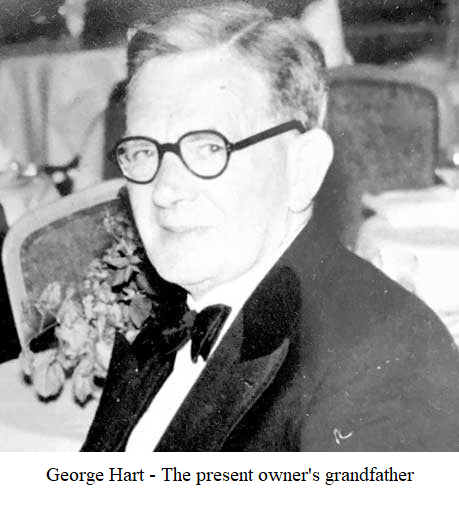Diamonds have held a special place in society for centuries, representing love, luxury, and elegance. Throughout history, iconic figures like Cleopatra and Marilyn Monroe have adorned themselves with these precious gemstones, solidifying their status as a girl's best friend.

The allure of diamonds goes beyond their physical beauty; it lies in their ability to captivate and mesmerize with their unmatched sparkle. These gemstones also carry deep symbolism of eternal love and commitment, making them the perfect choice for significant milestones such as engagements, anniversaries, and birthdays. Moreover, diamonds are not only a stunning accessory but also a smart investment, as their value tends to appreciate over time.
Historical Significance of Diamonds
The historical significance of diamonds stretches far back into the annals of time, intertwining with the destinies of empires, the crafting of legends, and the evolution of cultural traditions around the globe. These gemstones, formed deep within the Earth's mantle under extreme pressure and heat, have captivated humanity not merely as objects of beauty but as symbols of power, wealth, and mystical properties.
Ancient Beginnings and Early Discoveries
The fascination with diamonds began nearly 3,000 years ago in India, where they were first mined. These early diamonds were not the polished gems we recognize today but rough crystals that gleamed with a promise of something more profound. Ancient Indian texts, including the Arthashastra and the Manusmriti, reference diamonds as symbols of strength and courage, believed to offer protection in battle and ward off evil.
Diamonds in Ancient Rome and Greece
In ancient Rome and Greece, diamonds held a place of reverence and mystique. The Greeks believed that diamonds were tears of the gods or splinters from falling stars, attributing divine origins to their unmatchable sparkle. Pliny the Elder, the Roman naturalist, extolled diamonds as the most precious of all goods, not just for their beauty but for the powers they were thought to possess.
The Middle Ages: Diamonds as Talismans and Royal Adornments
During the Middle Ages, diamonds began to emerge as regal adornments, symbolizing invincibility and royal power. Kings and queens wore diamonds to signify their strength and divine right to rule. These gemstones were also thought to have talismanic properties, providing protection against the evils of poison, plague, and sin. The famous Koh-i-Noor and Hope diamonds, among others, have histories steeped in tales of conquest, intrigue, and curses, illustrating the diamond's role in the lore and destiny of ruling dynasties.
The Renaissance and the Advent of Diamond Cutting
The Renaissance marked a turning point in the history of diamonds with the advent of new cutting techniques that began to unlock the true brilliance hidden within the rough stones. The development of the faceted cut, enhancing the gem's ability to reflect light, transformed diamonds into the breathtaking beauties coveted by the European aristocracy. Venice, a thriving hub of trade and innovation, became the center of the diamond cutting industry.
Diamonds as Instruments of Diplomacy and Symbols of Affection
Beyond their use as personal adornments and status symbols, diamonds also played roles in diplomacy and expressions of love. European monarchs gifted diamonds as tokens of goodwill or to secure alliances. The tradition of diamond engagement rings, which symbolize eternal love and commitment, can be traced back to the Archduke Maximilian of Austria's proposal to Mary of Burgundy in 1477 with a ring set with thin, flat pieces of diamond in the shape of an "M."
Symbolism of Love & Commitment
The symbolism of diamonds as markers of love and commitment is deeply ingrained in cultures worldwide, tracing a path through history that highlights human emotions and societal values. This enduring symbol transcends mere adornment, embodying promises, eternal bonds, and the unyielding strength of love.
Ancient Symbolism and Early Beliefs
Historically, diamonds were believed to possess qualities that mirrored the ideals of love and fidelity. The ancient Romans, for example, held the belief that Cupid's arrows were tipped with diamonds, lending an unbreakable strength to the bonds of love. This association between diamonds and divine love laid the groundwork for the gemstone's future role in marital traditions.
Victorian Era: Sentimentality and Romance
The Victorian era further romanticized the use of diamonds in engagement rings and other jewellery meant to signify love and devotion. Jewellery of the time often featured diamonds in elaborate designs that conveyed specific sentiments, with each piece telling a story of affection, remembrance, or eternal love. The popularity of diamonds during this period reflected a broader societal emphasis on romantic love as the foundation for marriage.
The 20th Century and De Beers: A Symbol for All
The 20th century saw the transformation of the diamond engagement ring from a luxury for the elite to a symbol of love accessible to people from all walks of life. This shift was significantly propelled by the De Beers diamond company's marketing campaigns, which popularized the slogan "A Diamond is Forever." This phrase encapsulated the idea of diamonds as symbols of everlasting love and the unbreakable nature of marital commitment, deeply embedding diamonds within the cultural fabric of engagements and weddings.
The Ethical and Sustainable Shift
In recent times, the symbolism of diamonds has evolved to include considerations of ethics and sustainability. Ethically sourced diamonds and lab-grown alternatives are gaining popularity among couples who seek to ensure that their symbols of love do not come at the cost of environmental damage or human suffering. This shift reflects a broader societal movement towards responsible consumption and adds a new layer of meaning to the symbolism of diamonds, intertwining love with values of justice and care for the planet.
Conclusion
The historical significance of diamonds is a tapestry woven with threads of beauty, power, mysticism, and romance. From ancient talismans to symbols of eternal love, diamonds have transcended their material value to become embodiments of human history and culture. As we continue to cherish these gemstones, we carry forward the legacies of the countless hands through which they have passed, each diamond a sparkling testament to the enduring human fascination with the sublime.
Our unique collections of antique and vintage diamond jewellery span across the ages and is changing constantly. Why not call in and see us in our shop in Frome Somerset
You may also like our: Vintage Jewellery price guide



